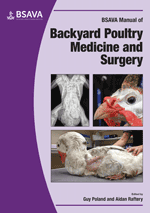
Full text loading...

Backyard poultry are prey species and susceptible to the negative effects of excessive stress. Anaesthesia and analgesia must be used carefully to alleviate suffering and reduce stress in patients. This chapter details requirements for anaesthesia, general anaesthetic protocols, local anaesthesia, analgesia, monitoring, air sac cannulation, recovery and anaesthetic emergencies.
Anaesthesia and analgesia, Page 1 of 1
< Previous page | Next page > /docserver/preview/fulltext/10.22233/9781910443194/9781910443194.22-1.gif

Full text loading...







